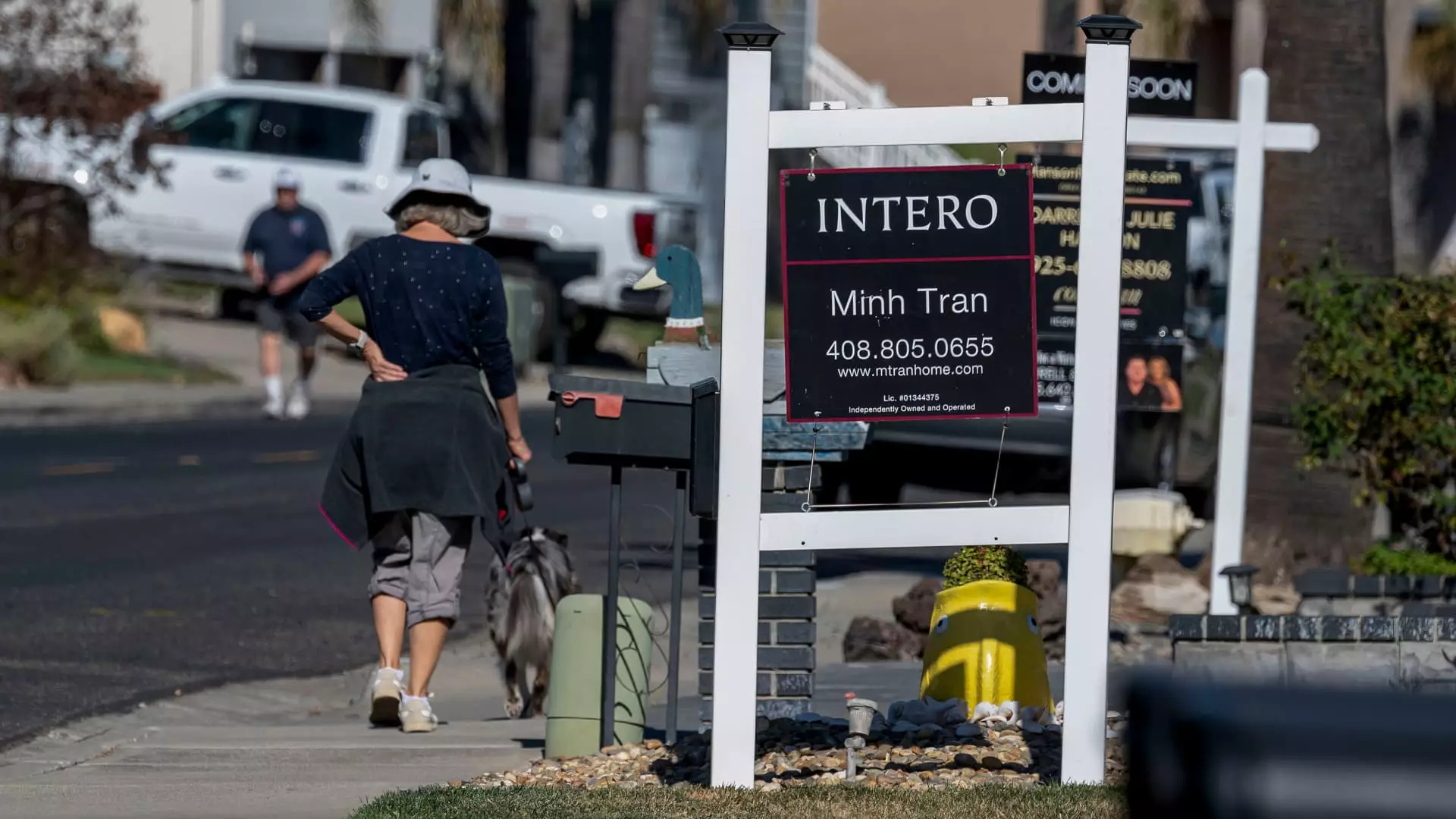In the past month, mortgage rates have been consistently on the rise, marking four consecutive weeks of increases. This trend has dire implications for demand within the housing market, as evidenced by a notable drop in mortgage application volumes. The Mortgage Bankers Association reported a decline of 3.7% in total mortgage applications when compared to the previous week, reflecting a significant dip that follows a seasonally adjusted index. Such a trajectory indicates that potential homebuyers are increasingly hesitant to enter the market, primarily due to the escalating costs associated with borrowing.
For those seeking 30-year fixed-rate mortgages, the average interest rate has now climbed to 6.99%, a slight uptick from 6.97%. This change, albeit marginal, translates into a substantial financial burden over time for borrowers, especially considering that the average points decreased slightly to 0.68. Although there was a modest increase in refinancing applications—2% higher than the preceding week—the overall refinancing demand remains far lower than it was a year prior, with a stark 6% decrease observed. This presents a paradox for the mortgage industry: while rates for refinancing have shown minor fluctuations, the underlying trend remains a significant downturn in application volume, reflective of economic constraints on consumers.
Interestingly, purchase mortgage applications fell sharply by 7% for the week, with a staggering 15% drop year-over-year. The current housing market has a larger inventory of homes available compared to the same time last year, yet potential buyers seem deterred by the combination of elevated mortgage rates and high property prices. According to Joel Kan, the vice president and deputy chief economist at the MBA, the current pace of purchase applications is the slowest since February 2024. This commentary encapsulates the disheartening reality many first-time homebuyers face, as financial conditions continue to squeeze their ability to secure mortgages.
As the week progressed, mortgage rates have shown no signs of retreat, with a reported average of 7.14% for 30-year fixed mortgages. This increment appears driven by undercurrents of economic data that are influencing market sentiments. Depending on how these economic metrics evolve, they could either exacerbate the upward trend or potentially reverse it as the new year unfolds. The uncertainty surrounding economic recovery and inflationary pressures remains a critical factor shaping the mortgage landscape.
The current upward movement of mortgage rates, coupled with dwindling application numbers, signals a cautious outlook for prospective homebuyers. With a challenging economic environment and rising costs, many are likely to remain on the sidelines until conditions become more favorable. This ongoing scenario emphasizes the complexities faced within the housing market as stakeholders grapple with fluctuating interest rates and shifting buyer sentiment. Moving forward, close attention must be paid to both rate policies and economic indicators to gauge the possibilities for recovery in the mortgage sector.

